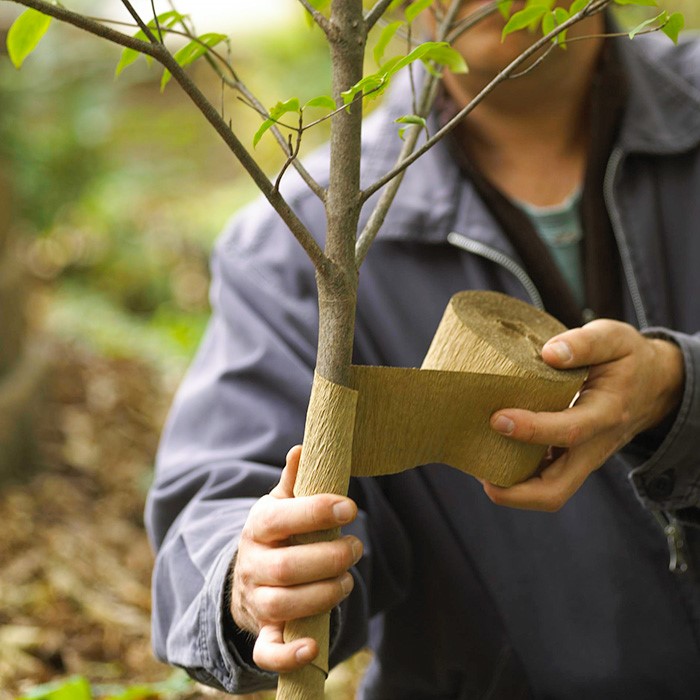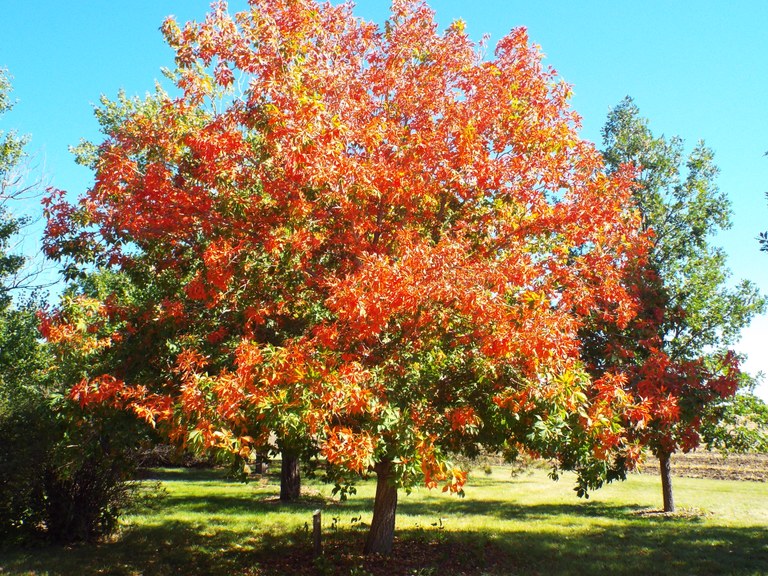Fall Tree Care
09/17/18
One of the sure signs of autumn is fall foliage in the landscape as woody plants prepare for winter. Here are some things that you can do to prepare your trees for the long dormant season:
- PLANT. Yes, fall is a great time to plant trees. Cooler temperatures enable plants to acclimate to a new home without the stress of high air and soil temperatures. While selection at nurseries may be limited, trees are often on sale in the fall. Make diverse species choices that are suitable for North Dakota’s alkaline soils – don’t buy something just because it seems like a good deal. And don’t plant more green ash, the most dominant tree in our state’s urban and country landscape. For winter interest, choose a tree with interesting bark or fruit that hangs on the tree beyond fall.
- DON’T FERTILIZE newly planted trees, and only apply slow-release fertilizers on established trees. Applications of nitrogen will encourage new tree growth which won’t have a chance to harden off before winter. If you’re fertilizing your lawn, you’re also fertilizing any trees nearby. Trees have a root spread equal to or greater than the height of the tree.
- WRAP newly planted trees with brown kraft paper, starting at ground level and working your way up the tree to the first branch. White plastic tubing can also be used. This protects young trees from winter sunscald on the southwest exposure of the trunk, and will also deter rodents from feeding on the bark. Trees most susceptible include fruit trees, mountain ash, honeylocust, maples and linden. Tree wraps should be removed in the spring.

- WATER trees before freeze-up. Tree roots remain active until soil temperatures dip below 40 degrees. Watering is especially beneficial for evergreens, which transpire tiny amounts of moisture through their needles throughout the winter months.
- HERBICIDE APPLICATIONS should be done with caution around trees. Herbicides are most effective on lawns in the fall, but some herbicides can be detrimental to tree roots, especially with repeat applications. Spot spray, if possible. Learn to tolerate a few weeds – a diverse habitat is pollinator-friendly!
- PRUNING is best done when trees are dormant, so leave that task until early spring. Routine pruning in early spring before buds swell enables the tree to naturally seal off pruning wounds most effectively. Broken branches should be properly pruned as soon as they are noticed. Don’t use pruning sealer, tar or paint on any tree cuts or wounds. A proper pruning cut doesn’t require sealer, and no amount of sealer can fix a bad pruning cut.
- FIREWOOD. For those who burn wood, fall is a popular time to harvest and cut firewood, or purchase it from a seller. Keep invasive pests away by purchasing or harvesting firewood locally. Transport of infested firewood is most likely how emerald ash borer (EAB) will make its way to North Dakota. With new finds in 2018, EAB is now established and confirmed in 35 states including Minnesota and South Dakota, and Winnipeg. This invasive pest is closing in upon North Dakota. Don’t move firewood. Protect North Dakota’s trees!
- Links for tips on planting, pruning, and maintaining trees: http://treesaregood.org/treeowner/treeownerinformation.aspx
- Information on NDSU Woody Plant Improvement program and NDSU releases: https://www.ag.ndsu.edu/plantsciences/research/woody-plants
 Happy Fall!
Happy Fall!
Gerri Makay
Gerri.Makay@ndsu.edu
ND Forest Service, Community Forestry Program Manager


